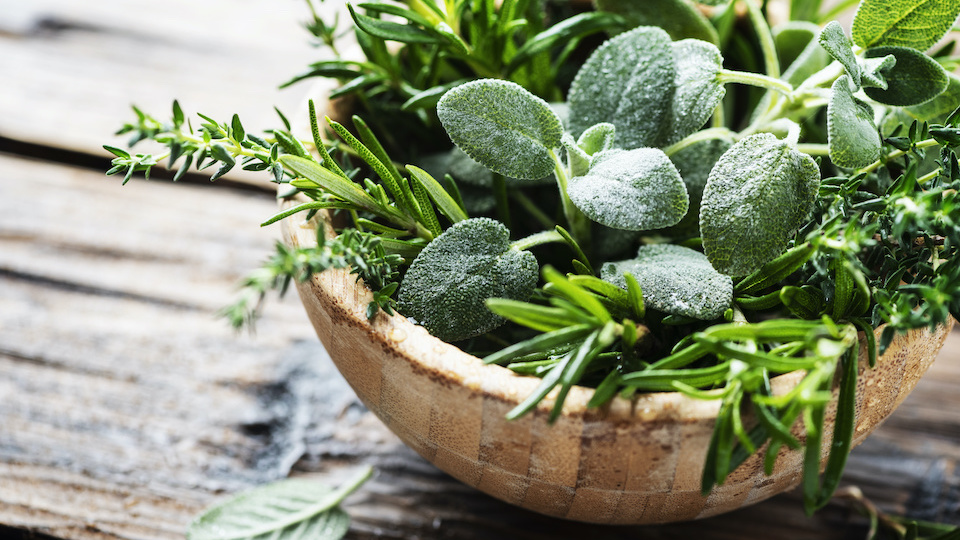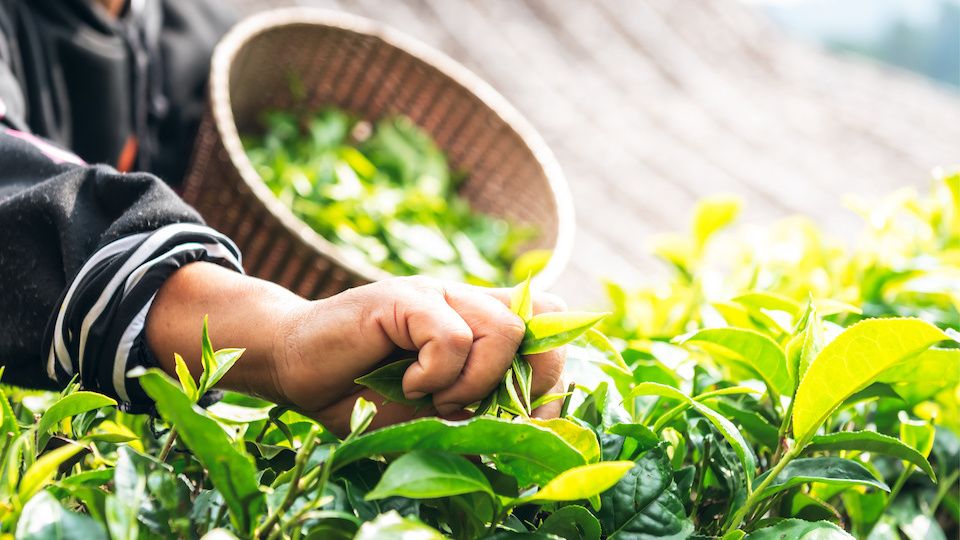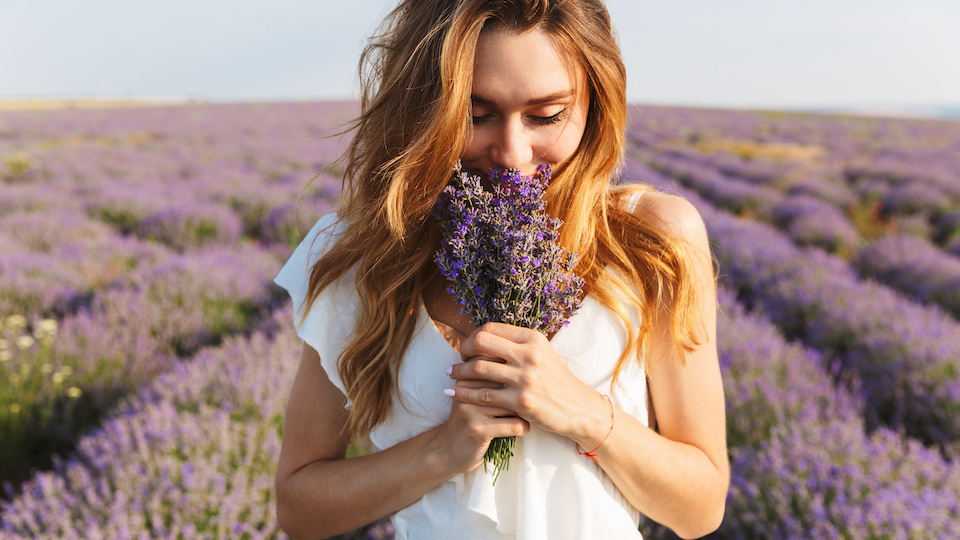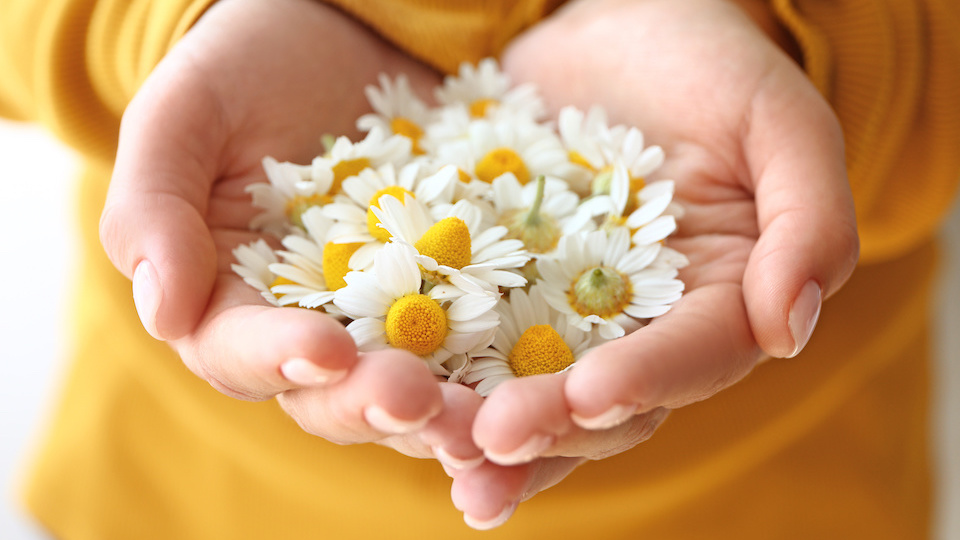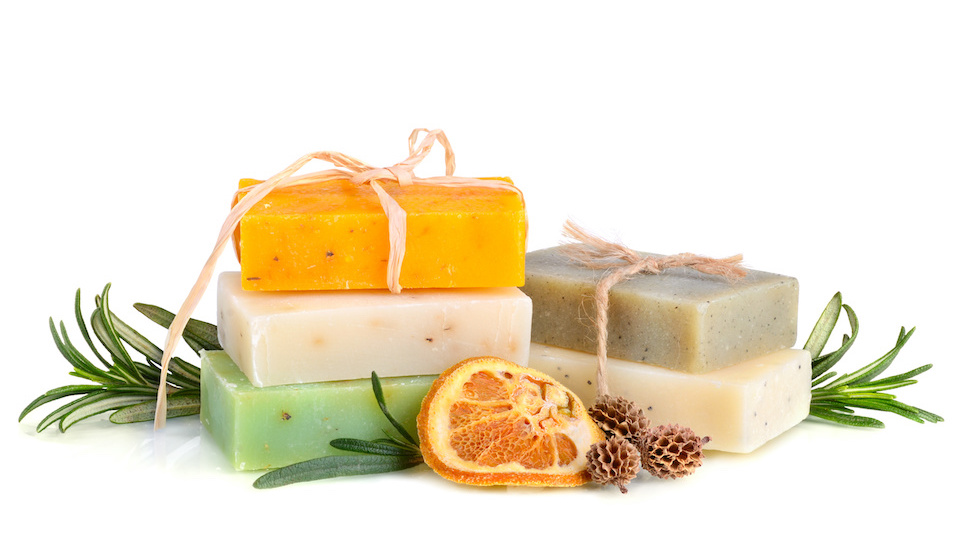During these uncertain times, fear and anxiety for the future are commonplace. If you’re struggling to relax and find that you can’t unwind, it may be time to plant a lovely, aromatic patch of chamomile in your herb garden to help ease your worries. Here’s why we love this useful herb and how you can grow some today.
Roman vs. German chamomile
There are two types of chamomile, so it is important to understand exactly what you are planting. German chamomile produces long, flimsy stems and tons of delicate white flowers that look very similar to daisies. This is the variety that is most frequently used for tea and tinctures since it produces an abundance of blooms. Roman chamomile is usually used as a fast-spreading groundcover to fill in holes in your garden and provide a nice, fragrant element.
Both varieties are technically annuals but will reseed and spread with vigor, allowing them to come back every year, so keep that in mind before you choose a planting spot. German chamomile will add a beautiful pop of white to any kitchen herb garden, and it is a great plant to have on hand. For the rest of this article, we will be referring to the German Chamomile variety as it is the best herb for various kitchen and beauty uses.
Why you should grow it
Chamomile isn’t just a fragrant, attractive addition to your herb garden. It can be used for a wide variety of tinctures and tonics that can help ease insomnia, reduce anxiety, and help even help reduce inflammation and menstrual pain.
During these stressful times, chamomile may be just the herb you need to help relieve some of that pent of fear and anxiety. Plus, if you are experiencing digestive issues due to excess stress or an altered diet, chamomile could help alleviate stomach discomfort, gas, and bloating.
If you have a little extra time on your hands due to lockdown or decreased work hours, why not consider making some DIY healthy and beauty products with this soothing herb. Chamomile is often included in many personal care products due to its anti-inflammatory, skin-soothing properties. Combine it with oatmeal for ultimate nourishment and exfoliation.
How to grow
Start seeds indoors under a grow light about six to eight weeks before your last expected frost date. This will give the seedlings time to grow and will help give them a good start for transplanting into your garden. Lightly tamp down the seeds into your growing medium and mist with water to avoid disturbing the seeds.
Once all danger of frost has passed, transplant seedlings to the garden, leaving a space of about eight to twelve inches between plants. Water thoroughly when planting, making sure that your soil is well-draining and has been amended with organic compost. Like many other herbs, chamomile thrives when left to its own devices. Water frequently until the seedlings put down roots and then only occasionally to let the roots dry out slightly between waterings. In just a few weeks, you should see your first blooms developing on the spindly, green stems.
Since chamomile is so hardy, it doesn’t require any fertilizer and will grow strong and tall with very minimal care. Plus, it doesn’t attract many pests or diseases, which makes it a wonderful “leave it and forget it” herb.
Harvest
Once the flower petals begin to curl downward, cut off the flowers and lay them on a mesh surface to dry. Chamomile leaves tend to be bitter and unappealing, so once your cut off the flowers, trim the stalks to about six inches above the ground. Leave the spent stalks on the ground as they will decompose quickly and add essential nutrients back into the soil.
Though you can use fresh flowers for tea, drying this useful herb will let it last longer, and you won’t need as many flowers since the flavor will be more concentrated. Keep the flowers spread out for about a week in a cool, dry place and store in a glass jar or airtight bag for use in the kitchen.
Making tea
One of the best ways to reap all of the amazing benefits of chamomile is to brew a nice, aromatic cup of relaxing tea. Measure out about two tablespoons of dried flowers for every eight-ounce cup of tea you wish to make. Boil water and pour it over the flowers, letting it steep for about five minutes. Then strain through a fine, tea sieve. Feel free to add any of your favorite herbs, such as mint, to mix up the flavor a little bit. You can also use local raw, honey, for sweetener, lemon for a bit of zing, or a little creamer for a wonderful nighttime drink.
-Susan Patterson



